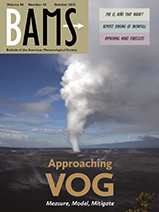 Monitoring and Modeling the Terrestrial System from Pores to Catchments - the Transregional Collaborative Research Center on Patterns in the Soil-Vegetation-Atmosphere System
Monitoring and Modeling the Terrestrial System from Pores to Catchments - the Transregional Collaborative Research Center on Patterns in the Soil-Vegetation-Atmosphere System
Simmer, C., I. Thiele-Eich, M. Masbou, W. Amelung, S. Crewell, B. Diekkrueger, F. Ewert, H.-J. Hendricks Franssen, A. J. Huisman, A. Kemna, N. Klitzsch; S. Kollet, M. Langensiepen, U. Loehnert, M. Rahman, U. Rascher, K. Schneider, J. Schween, Y. Shao, P. Shrestha, M. Stiebler, M. Sulis, J. Vanderborght, H. Vereecken, J. van der Kruk, T. Zerenner, and G. Waldhoff, 2014
In print in Bulletin of the American Meteorological Society, 96, 1765–1787.
doi: http://dx.doi.org/10.1175/BAMS-D-13-00134.1
Abstract
Most activities of humankind take place in the transition zone between four compartments of the terrestrial system: the unconfined aquifer, including the unsaturated zone; surface water; vegetation; and atmosphere. The mass, momentum, and heat energy fluxes between these compartments drive their mutual state evolution. Improved understanding of the processes that drive these fluxes is important for climate projections, weather prediction, flood forecasting, water and soil resources management, agriculture, and water quality control. The different transport mechanisms and flow rates within the compartments result in complex patterns on different temporal and spatial scales that make predictions of the terrestrial system challenging for scientists and policy makers. The Transregional Collaborative Research Centre 32 (TR32) was formed in 2007 to integrate monitoring with modeling and data assimilation in order to develop a holistic view of the terrestrial system. TR32 is a long-term research program funded by the German national science foundation Deutsche Forschungsgemeinschaft (DFG), in order to focus and integrate research activities of several universities on an emerging scientific topic of high societal relevance. Aiming to bridge the gap between microscale soil pores and catchment-scale atmospheric variables, TR32 unites research groups from the German universities of Aachen, Bonn, and Cologne, and from the environmental and geoscience departments of Forschungszentrum Jülich GmbH. Here, we report about recent achievements in monitoring and modeling of the terrestrial system, including the development of new observation techniques for the subsurface, the establishment of cross-scale, multicompartment modeling platforms from the pore to the catchment scale, and their use to investigate the propagation of patterns in the state and structure of the subsurface to the atmospheric boundary layer.









